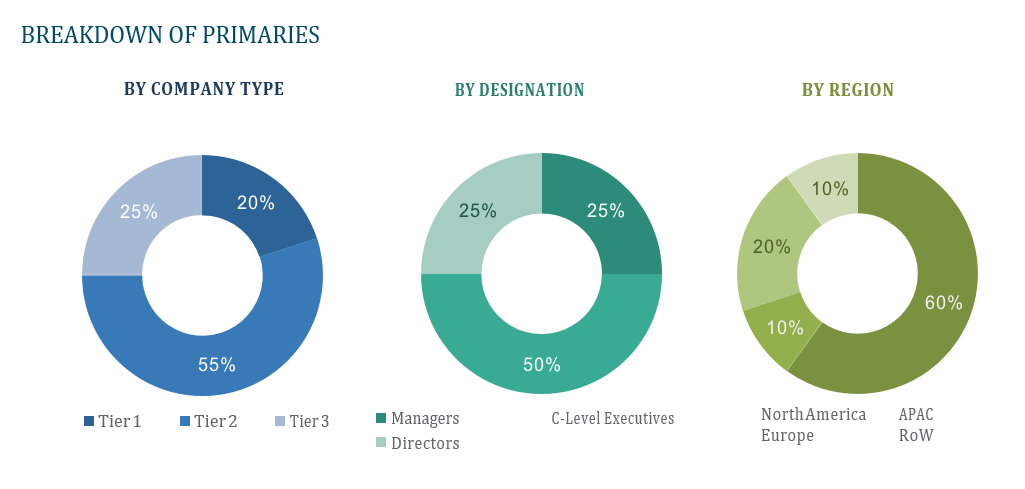OVERVIEW
The global market for surgical navigation systems is projected to hit USD 1,564 million by 2025, rising at 5.43 percent CAGR over the forecast period (2020–2025). Growth in this market is driven primarily by factors such as the increasing acceptance of minimally invasive surgical procedures; increasing number of regulatory approvals and alliances, agreements, and collaborations between market players; increasing incidence of orthopedic and neurological disorders; and high prevalence of ENT disorders.








TABLE OF CONTENT
1 Global Surgical Navigation Systems Market
1.1 Study Objectives
1.2 Market Definition
1.3 Study Scope
1.3.1 Markets Covered
1.3.2 Geographic Scope
2 RESEARCH METHODOLOGY
2.1 Research Data
2.1.1 Secondary Data
2.1.1.1 Key Data From Secondary Sources
2.1.2 Primary Data
2.1.2.1 Key Data From Primary Sources
2.1.2.2 Key Industry Insights
2.1.2.3 Breakdown of Primaries
2.2 Market Size Estimation
2.2.1 Bottom-Up Approach
2.2.2 Top-Down Approach
2.3 Market Breakdown and Data Triangulation
2.4 Research Assumptions
3 Global Surgical Navigation Systems Market – Executive Summary
3.1 Market Revenue, Market Size and Key Trends by Company
3.2 Key Trends by type of Application
3.3 Key Trends segmented by Geography
4 Global Surgical Navigation Systems Market – Comparative Analysis
4.1 Product Benchmarking – Top 10 companies
4.2 Top 5 Financials Analysis
4.3 Market Value split by Top 10 companies
4.4 Patent Analysis – Top 10 companies
4.5 Pricing Analysis
5 Global Surgical Navigation Systems Market – Industry Market Entry Scenario
5.1 Regulatory Framework Overview
5.2 New Business and Ease of Doing business index
5.3 Case studies of successful ventures
5.4 Customer Analysis – Top 10 companies
6 Global Surgical Navigation Systems Market – Market Forces
6.1 Introduction
6.2 Market Dynamics
6.2.1 Drivers
6.2.2 Opportunities
6.2.3 Challenges
6.3 Porters Analysis of Market
6.3.1 Bargaining power of suppliers
6.3.2 Bargaining powers of customers
6.3.3 Threat of new entrants
6.3.4 Rivalry among existing players
6.3.5 Threat of substitutes
7 Global Surgical Navigation Systems Market – Strategic Analysis
7.1 Value Chain analysis
7.2 Product Life Cycle
7.3 Supplier and distributor analysis (Market share and product dealing strategies)
8 Global Surgical Navigation Systems Market – By Application (Market Size – & million/billion)
8.1 Neurosurgery navigation systems
8.2 Orthopedic navigation systems
8.3 Spinal navigation systems
8.4 Dental navigation systems
8.5 ENT navigation systems
9 Global Surgical Navigation Systems Market – By Technology
9.1 Optical
9.2 Electromagnetic (EM)
9.3 Hybrid
10 Global Surgical Navigation Systems Market – By Patient Care Setting
10.1 Hospitals
10.2 Physician Practices & Ambulatory Settings
11 Global Surgical Navigation Systems Market – By Geography (Market Size – &
million/billion)
11.1 Introduction
11.2 North America
11.2.1 US
11.2.2 Canada
11.2.3 Mexico
11.3 Europe
11.3.1 U.K
11.3.2 Germany
11.3.3 Italy
11.3.4 France
11.3.5 Spain
11.3.6 Rest of Europe
11.4 Asia-Pacific
11.4.1 China
11.4.2 Japan
11.4.3 India
11.4.4 South Korea
11.4.5 Rest of APAC
11.5 Rest of the World
11.5.1 South America
11.5.2 Middle East
11.5.3 Africa
12 Global Surgical Navigation Systems Market – Entropy
12.1 New product launches
12.2 M&A’s, collaborations, JVs and partnerships
13 Global Surgical Navigation Systems Market Company Profile (Key Players)
13.1 Market Share, Company Revenue, Products, M&A, Developments
13.2 B. Braun Melsungen AG
13.3 Medtronic PLC
13.4 Karl Storz GmbH & Co. Kg
13.5 Stryker Corporation
13.6 Brainlab AG
13.7 Amplitude Surgical
13.8 Zimmer Biomet Holdings, Inc.
13.9 Siemens Healthineers (A Division of Siemens AG)
13.10 Scopis GmbH
13.11 Fiagon GmbH (A Subsidiary of Fiagon AG)
13.12 Company 11 & more
14 Global Surgical Navigation Systems Market – Appendix
14.1 Sources
14.2 Abbreviations













